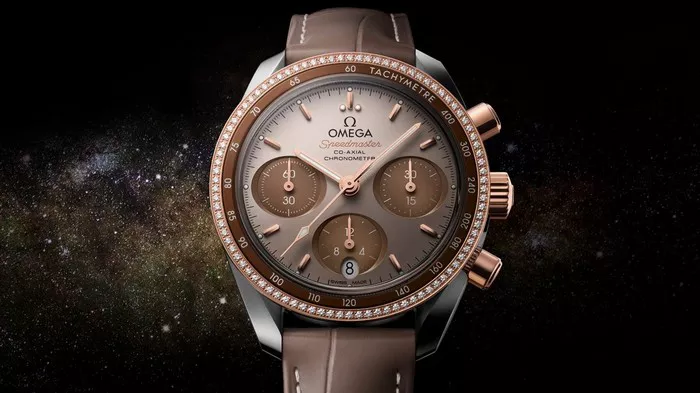Delving into the intricacies of horological longevity, the lifespan of a timepiece becomes a key consideration for watch enthusiasts and prospective buyers. This article embarks on a journey through the craftsmanship and engineering prowess of Omega watches, seeking to answer the question that resonates with those investing in precision and heritage: How long will an Omega watch last? Exploring the factors influencing durability and the brand’s commitment to longevity, we unveil the endurance that defines Omega timepieces in the contemporary tapestry of horology.
Crafting Timeless Durability: The Art of Omega Engineering
The Foundations of Longevity
Omega, with a legacy dating back to 1848, has set industry standards for precision and durability. The longevity of an Omega watch is rooted in the meticulous craftsmanship and engineering excellence that defines each timepiece. From the selection of materials to the intricacies of movement design, every aspect is calibrated for endurance.
Stainless Steel and Precious Metals
Omega utilizes high-quality materials, with stainless steel being a cornerstone of durability. Stainless steel offers resistance to corrosion and wear, ensuring that the watch withstands the test of time. For those seeking additional longevity, Omega offers models crafted from precious metals like gold and platinum, which not only enhance aesthetics but also contribute to the watch’s enduring value.
The Heart of Durability: The Omega Movement
Precision Engineering: Co-Axial Escapement
A defining feature of the Omega movement is the Coaxial escapement, a revolutionary technology introduced by watchmaking legend George Daniels and adopted by Omega. This innovation reduces friction between components, minimizing wear and enhancing the long-term performance of the movement. The Coaxial escapement not only contributes to accuracy but also extends the lifespan of Omega watches.
In-House Movements and Servicing
Omega’s commitment to in-house movements ensures that each timepiece is crafted with precision and attention to detail. While regular servicing is recommended every 5 to 7 years, the robust design of Omega movements contributes to their resilience. Proper maintenance enhances the longevity of the movement, ensuring that the watch remains a reliable companion for decades.
Factors Influencing Longevity: From Lifestyle to Environmental Conditions
Frequency of Use
The lifespan of an Omega watch is influenced by how frequently it is worn. Regular use allows the movement to remain lubricated and minimizes the risk of components seizing. However, for watches that spend prolonged periods in storage, occasional winding or periodic wear is advisable to maintain optimal functionality.
Environmental Factors
The environment in which a watch exists can impact its longevity. Exposure to extreme temperatures, humidity, or magnetic fields can affect the performance of the movement. Omega’s advancements in anti-magnetic technology, particularly with Master Chronometer-certified watches, mitigate the impact of magnetic influences, enhancing the watch’s resilience.
Proper Care and Maintenance
While Omega watches are engineered for durability, proper care and maintenance play a crucial role in ensuring their longevity. Avoiding impacts, keeping the watch away from extreme conditions, and periodic cleaning contribute to the preservation of both aesthetics and functionality.
Endurance in Action: Real-World Examples
Vintage Omega Watches
The enduring appeal of vintage Omega watches is a testament to their longevity. Many vintage models, when properly cared for, continue to function seamlessly, showcasing the timeless craftsmanship that defines Omega’s heritage. Vintage Omega watches, sought after by collectors, often pass through generations, becoming cherished heirlooms.
Historical Significance: Moonwatch Legacy
The Omega Speedmaster, famously known as the Moonwatch, has endured as a symbol of durability and precision. Its role in space exploration, including being the first watch worn on the moon during the Apollo 11 mission, underscores the resilience of Omega watches in the harshest environments.
Conclusion: A Legacy of Time Endurance
In conclusion, the question of how long an Omega watch will last leads us into a realm where precision meets endurance, and craftsmanship becomes a legacy. Omega, with its rich heritage and commitment to excellence, has crafted timepieces that transcend fleeting trends, standing as enduring symbols of horological mastery.
The durability of an Omega watch extends beyond the lifespan of a single owner, often becoming a bridge between generations. Whether it’s the innovative Coaxial escapement, the meticulous engineering of in-house movements, or the use of high-quality materials, every facet of an Omega timepiece is calibrated for the enduring passage of time.
As enthusiasts explore the world of Omega watches, they discover more than mere timekeeping instruments; they encounter artifacts of durability, crafted to withstand the rigors of daily wear and the test of changing eras. Omega’s legacy of endurance invites wearers to not just measure time but to embrace the timeless journey that unfolds with every tick of the hands—a journey that extends far beyond the present, resonating with the echoes of the past and the promise of enduring excellence in the future.

